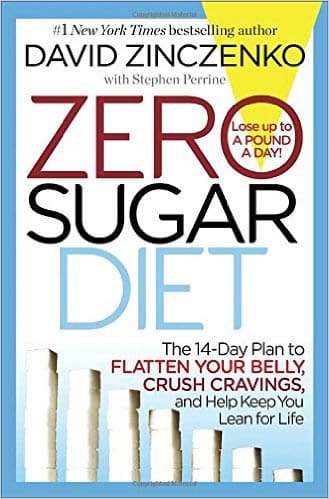Executive Summary:
The Zero Sugar Diet book aims to educate on the constructs of a well-rounded healthy diet full of nutritious high-fiber foods, such as whole grains, fruits, vegetables and nuts as well as lean protein. The book provides readers guidance on how and why to select foods when grocery shopping and eating out to set them up for success. The key takeaway is that fiber is the pillar of nutrition, and that added sugars should generally be avoided. Overall, the extreme “zero sugar” title of the book did not reflect extreme or unreasonable diet recommendations; a more accurate title would have been The High Fiber, Minimal Added Sugar Diet. We are pleased that the benefits of whole grains and fiber are held in such high regard, and even grain foods that contain added sugar can still fit into this diet, as long as they contain more grams of fiber than grams of added sugar. We will continue to monitor David Zinczenko’s work, as he is well connected to the health and diet media and industry, and his Eat This, Not That! franchise and “Zero” book series are popular and make headlines.
Complete Recap:
David Zinczenko’s newest book, Zero Sugar Diet, published December 27, 2016, promises to provide readers with a “14-‐Day Plan to Flatten Your Belly, Crush Cravings, and Help Keep You Lean for Life.” Zinczenko is the New York Times best-‐selling author of numerous diet books including Zero Belly Diet, Zero Belly Cookbook and Zero Belly Smoothies, the co-‐author of the Eat This, Not That! franchise and the editorial director of Men’s Fitness.
As diet books tend to do, Zinczenko’s newest opens with a startling claim: Sugar is causing the worst health scourges in America today, including obesity, diabetes, heart disease, cancer, liver disease, fatigue and tooth decay. Sugar is making us fat and making us sick, and it is everywhere; not just in sweet foods like candy and ice cream, but also in foods like pizza, oatmeal, pasta sauce and processed “health” foods. But, alas, there are plenty of naturally sugar-‐free foods such as yogurt, cereal, hotdogs, hamburgers, pasta and chips that are safe to eat on the Zero Sugar Diet.
The book explains the constructs of the diet, provides reasoning behind recommendations and arms readers with recipes, as well as restaurant and fast-‐food offerings, that fit into the diet’s parameters. The Zero Sugar Diet is composed as such: three meals and one snack per day. Each meal must include the following:
- A zero sugar carb
Eat them until you’re satisfied: vegetables (fresh or frozen), whole fruit (fresh or frozen), beans/legumes, unsweetened whole grains and cereals or nuts/seeds. - A power protein
Eggs, fish, Greek yogurt or lean meat (turkey, chicken, lean beef, roast pork) - A healthy beverage
Water, tea, milk, or even wine in moderation. No fruit juice or soda— ever. Exercise comes fourth, and is optional. During the first 14 days, the rule for packaged food is if it contains any added sugar, toss it. After the first 14 days, you can eat foods that have added sugar, as long as the fiber content outweighs the added sugar content (i.e. grams of fiber are higher than grams of sugar).
The Zero Sugar Diet is generally what a well-‐balanced diet should consist of: limited added sugars, lean protein, healthy fats, and foods rich in fiber, such as whole grains, fruits and vegetables. Zinczenko praises fiber as the pillar of a healthy diet and dedicates an entire section to explaining why fiber is absolutely essential to getting (and staying) slim. In “Special Report: Why Fiber is the Perfect Solution, and How to Make It Work for You,” he states that fiber allows us the maximum amount of dietary flexibility without restrictions. The various health attributes of fiber are discussed, for example, eating fiber fills you up and prevents your body from experiencing a sugar rush; fiber feeds the bacteria in your colon triggering the reaction that flips off your appetite switch, and fiber stimulates your satisfaction and sleep hormones. A bit more extreme claim states that fiber prevents fat from forming inside your belly and allows us to eat meat and other fatty fare without increasing our risk of heart attack or stroke. In his in-‐depth explanation of fiber and fiber-‐containing foods, Zinczenko identifies functional fibers that are added to processed foods as a fiber “fibber.” These “frankenfibers,” such as chicory root (as used in Activia, he points out) don’t necessarily provide the same benefits of naturally occurring fiber, such as the cholesterol-‐lowering effect of the fiber found in oat bran. He advises readers to get fiber from natural sources, like whole grains.
As we know, grain foods are naturally rich in fiber, making whole grain foods and products come highly recommended in the Zero Sugar Diet. A plethora of whole grain foods are recommended on the plan and in the recipes and include: Nabisco Triscuits, Kellogg’s All-‐Bran® Bran Buds® Cereal, quinoa, tortillas, bread, cereals, Post Shredded Wheat, GG Bran Crispbread, air-‐popped popcorn, oatmeal, farro, English muffins, flatbreads, whole wheat pasta and bulgur. Zinczenko recommends people eat “good breads,” which he identifies as “100% whole grain” and without added sugar. “Bad breads” and “well meaning but stupid breads” are breads that are disguised as “good breads” bearing claims like “wheat” and “multigrain” but actually contain mostly white flour. Refined carbs, such as white flour and white pasta are “no better than refined sugars” and should be avoided on the diet.

